In 2024, logo hat design continues to be a vital tool for brand promotion and personal expression. Did you know that 69% of U.S. consumers own a branded hat? This highlights the enduring popularity of this accessory. Diving into the world of logo hat design, we’ll explore various hat styles, design principles, and emerging trends shaping the industry. This guide aims to provide you with the knowledge to create memorable and effective logo hats that resonate with your target audience.
Table of Contents
- Understanding Hat Types and Profiles
- Choosing the Right Hat Style
- Logo Design Principles for Hats
- Embroidery Techniques and Considerations
- Logo Placement and Sizing
- Emerging Trends in Logo Hat Design
- Custom Caps with Logo: Design Process
- Production Considerations for Logo Hats
- Marketing and Branding with Logo Hats
- Future Trends in Logo Hat Design
TL;DR
- Choose the right hat style based on your brand identity and target audience
- Focus on minimalist, easily recognizable logo designs for optimal embroidery results
- Consider embroidery techniques and placement for maximum impact and visibility
- Stay informed about emerging trends in sustainable materials and customization options
- Ensure brand consistency and explore innovative marketing strategies with logo hats
Understanding Hat Types and Profiles
When designing logo hats, understanding the various hat types and profiles is essential. Each style offers unique characteristics that can affect logo placement and overall design impact. Popular options include snapbacks, dad hats, trucker hats, bucket hats, and beanies. Each of these has distinct features and suitability for different logo designs.

Source: cncaps.com
Snapback Caps
Snapback caps are characterized by their high profile and flat brim, making them ideal for logo placement. These adjustable caps are especially popular among younger demographics, offering ample space for bold, eye-catching designs. Typically featuring a 6-panel construction with a structured front, snapbacks allow for larger designs, with a maximum embroidery area of 5.5″ wide by 2.1″ high, according to Printful. The adjustable plastic snap closure ensures one-size-fits-most sizing, and the flat brim can be customized with under-brim designs or embroidery.
Dad Hats
Dad hats have gained popularity due to their relaxed, vintage-inspired look. These low-profile caps feature a curved brim and unstructured front panel, making them suitable for more subtle and casual logo designs. Typically, dad hats have a 6-panel construction with a soft, unstructured front. The curved brim provides a more relaxed appearance compared to snapbacks, and embroidery on dad hats often requires careful consideration of design size and complexity.
Trucker Hats
Trucker hats are known for their mesh back panels and foam front, providing a unique canvas for logo placement. These hats are ideal for larger, more prominent designs and are often associated with a casual, outdoor lifestyle. Featuring a foam front panel that can accommodate 3D puff embroidery, trucker hats also have a high profile that allows for larger logo designs on the front panel. The mesh back provides ventilation and can be customized with printed or woven labels.
Bucket Hats
Bucket hats have made a comeback, offering a distinctive all-around brim that provides multiple options for logo placement. These hats are versatile and can be designed to suit various styles, from streetwear to outdoor gear. Bucket hats offer a 360-degree canvas for logo placement, including the brim. The flexible structure may require special considerations for embroidery stability. Different materials, such as cotton or nylon, can affect the embroidery process and final look.
Beanies
Beanies are knitted caps designed for colder weather, providing a unique challenge and opportunity for logo placement. Typically featuring logos on the fold-up brim, beanies require careful consideration of design size and visibility. Embroidery often requires specialized machines to handle the stretchy knit fabric. Logo placement on beanies is usually limited to the fold-up brim or a small area on the side. The stretchable nature of beanies can affect logo appearance when worn, requiring careful design planning. Gelato reports that the optimal logo size for embroidery on beanies should be approximately 2 to 2.5 inches in width and height.
Gelato’s Guide to Hat Logo Design Size
Logo Design Principles for Hats
Creating effective logo designs for hats requires a deep understanding of embroidery limitations and visual impact. Key principles include ensuring that hat logos are scalable and legible at various sizes. The embroidery process imposes certain limitations on design complexity, so color selection plays a crucial role in logo visibility and overall aesthetic appeal.

Source: storyblok.com
Minimalism and Simplicity
Embracing minimalism and simplicity can lead to more effective and visually appealing results. Clean, bold designs are easier to embroider and more recognizable when viewed from a distance. Minimalist designs reduce the risk of embroidery issues and ensure clearer results, making logos more versatile and easily adaptable to different hat styles.
Line Thickness Considerations
The thickness of lines in your logo design is crucial for successful embroidery. Ensuring that lines are thick enough to be clearly stitched will result in a more professional and polished final product. Minimum line thickness for embroidery is typically 0.05″ (1.3 mm). Thinner lines may break or appear inconsistent when embroidered, so adjusting line thickness may be necessary when scaling logos for different hat sizes.
Color Selection
Choosing the right colors for your hat logo is essential for visibility and brand recognition. Limit color usage to 6 or fewer for standard embroidery to maintain clarity. Consider the hat’s base color when selecting thread colors for maximum contrast, and use color psychology to evoke specific emotions or associations with your brand.
Embroidery Techniques and Considerations
Understanding various embroidery techniques is crucial for achieving the desired look for your logo hats. Different techniques offer varying levels of dimensionality and texture. The choice of embroidery method can affect the durability and washability of the hat, with some techniques having limitations in terms of design complexity or color options.

Source: swoodsonsays.com
Flat Embroidery
Flat embroidery is the most common technique used for logo hats. This method creates a smooth, two-dimensional design that lies flat on the hat’s surface, suitable for a wide range of logo styles. Flat embroidery is versatile and can be used on various hat materials. This technique allows for detailed designs with multiple colors, with stitch direction and density affecting the overall appearance and quality of the embroidery.
3D Puff Embroidery
3D puff embroidery creates a raised, three-dimensional effect that can make your logo stand out. This technique is particularly effective for bold, simple designs and text. Using a foam backing to create the raised effect, 3D puff embroidery is best suited for larger design elements and text. The raised nature of 3D puff embroidery can increase the logo’s visibility from a distance.
Digitization Process
The digitization process is a crucial step in preparing your logo for embroidery. This involves converting your design into a stitch file that embroidery machines can read and execute accurately. Digitization requires specialized software and expertise to ensure optimal results. The process involves determining stitch types, directions, and densities for each part of the design. Proper digitization can significantly impact the quality and consistency of the final embroidered logo.
Stitch Types
Different stitch types serve various purposes in logo embroidery. Satin stitches are used for outlines and areas up to 0.5″ (12.5 mm) wide, while tatami stitches fill larger areas exceeding 0.5″ (12.5 mm) in width. Combining stitch types can create texture and depth in your logo design, enhancing its visual appeal.
Logo Placement and Sizing
The placement and sizing of your logo on a hat can significantly impact its visibility and overall effectiveness. Proper logo placement affects the hat’s balance and overall aesthetic, while proper sizing ensures legibility and impact while considering embroidery limitations. Different hat styles may require adjustments to logo placement and size, with recommended logo widths and typical placements varying across styles.
| Hat Style | Recommended Logo Width | Typical Placement |
|---|---|---|
| Baseball Cap | 2.5-3 inches | Center front panel |
| Trucker Hat | 3-4 inches | Center foam panel |
| Dad Hat | 2-2.5 inches | Center front, slightly lower |
| Beanie | 2-2.5 inches | Fold-up brim |
| Bucket Hat | 2-3 inches | Front or side panel |
Front Panel Placement
The front panel is the most common and visible area for logo placement on hats. To maximize impact, center the logo on the front panel, typically 2-3 inches wide for optimal visibility. Consider the hat’s seams and panels when positioning the logo, and adjust placement based on the hat’s profile (high vs. low) for the best results.
Side and Back Placement
While less common, side and back logo placements can offer unique branding opportunities. Side and back logos are typically smaller, ranging from 1-2 inches in width. Consider using simplified versions of your logo for smaller placements and explore creative options, such as wrapping designs around the side panels.
Hat-Specific Sizing Guidelines
Different hat styles have unique considerations for logo sizing. Baseball cap logos typically range from 2.5-3 inches wide on the front panel, while beanie logos are usually 2-2.5 inches wide when placed on the fold-up brim. Bucket hat logos may vary in size depending on placement, whether on the front, side, or all-around.
Emerging Trends in Logo Hat Design
The world of logo hat design is constantly evolving, reflecting broader societal shifts and consumer values. Staying informed about trends can help you create more relevant and appealing designs, though some trends may require new production techniques or materials. For instance, sustainable materials are gaining popularity as environmental consciousness grows.

Source: medium.com
Sustainable Materials
There’s an increasing demand for eco-friendly hat options. Recycled polyester and organic cotton are becoming more common in hat production, with some brands exploring biodegradable or compostable materials. Sustainable production methods may impact embroidery techniques and logo design considerations, but they align with growing consumer demand for environmentally responsible products.
Augmented Reality Integration
Augmented reality (AR) is opening up new possibilities for interactive logo experiences. AR-enabled logos can provide additional information or interactive experiences when scanned, requiring careful consideration of logo design and placement. Implementing AR features may involve collaboration with app developers or using existing AR platforms.
Customization Options
Personalization is becoming increasingly important to consumers. On-demand embroidery allows for personalized text or small design elements, and some brands offer interchangeable patches or removable logos for versatility. Customization options may require adjustments to production processes and inventory management. A great example of timely and culturally relevant hat designs is the Harris-Walz campaign’s camo hat with hunter’s orange text, which sold out 3,000 units within 30 minutes.
Custom Caps with Logo: Design Process
Creating custom caps with logos involves a multi-step design process. This process includes collaboration between designers, embroiderers, and clients. Iterative feedback and revisions are crucial for achieving the desired final product. Understanding the entire process helps in setting realistic timelines and expectations. The design process involves material selection, quality control, and scalability considerations.

Source: amazon.com
Material Selection
Choosing the right materials for your logo hats is crucial for both aesthetics and functionality. Cotton, polyester, and blends offer different benefits for durability and comfort. Material choice affects embroidery thread selection and stitching techniques. Consider moisture-wicking or UV-protective fabrics for specialized hat applications.
Quality Control
Implementing robust quality control measures ensures consistency and customer satisfaction. Establish clear quality standards for embroidery, stitching, and overall hat construction. Implement regular inspections throughout the production process and use sampling techniques to assess quality across large production runs.
Scalability
As demand for your logo hats grows, scalability becomes an important consideration. Develop standardized processes to ensure consistency across production runs. Consider automation options for high-volume production and plan for inventory management and storage of materials and finished products.
Marketing and Branding with Logo Hats
Logo hats can be powerful marketing tools when used effectively. They serve as mobile advertisements for your brand, and effective marketing strategies can increase the perceived value of logo hats. Consider how logo hats fit into your overall branding and marketing efforts. Maintaining brand consistency across all your marketing materials, including logo hats, is crucial for building brand recognition.
Source: amazon.com
Brand Consistency
Use consistent color schemes and design elements across all branded items. Ensure logo representation on hats matches other brand applications and consider how hat styles reflect your brand personality and values. Consistency helps in building a strong brand identity that your audience can easily recognize and connect with.
Target Audience Considerations
Understanding your target audience is key to creating logo hats that resonate with them. Research preferences of different age groups and subcultures, considering regional and cultural factors that may influence hat preferences. Use data analytics to inform design decisions and marketing strategies. Tailoring your hat designs and styles to appeal to specific demographic groups can significantly enhance your brand’s reach and impact.
Promotional Strategies
Effective promotional strategies can significantly boost the impact of your logo hats. Utilize social media platforms to showcase your logo hats and engage with customers. Explore collaborations with influencers or brand ambassadors to increase visibility. Consider limited edition releases or seasonal designs to create buzz and demand. A great example of effective promotional hat designs is Major League Baseball’s 2024 Armed Forces Day hat collection, featuring a new design with camo-print team logos and gold stars.
Syracuse.com’s Report on MLB’s New Armed Forces Day Hats
Future Trends in Logo Hat Design
The world of logo hat design is constantly evolving. Staying informed about technological advancements in the textile and embroidery industries is crucial for innovation. Consider how consumer preferences and lifestyle changes may impact hat design, and explore innovative materials and production methods to stay ahead of the curve. The integration of smart fabrics into hat design opens up new possibilities for functionality and interactivity.

Source: medium.com
Smart Fabric Integration
Smart fabrics can integrate electronic components, offering new functionalities like temperature regulation or interactive features. Explore conductive threads for integrating electronic components and consider how smart fabrics might affect logo design and placement. Investigate the durability and washability of smart fabric integrations to ensure they meet consumer expectations for longevity and ease of care.
3D Printing Applications
3D printing technology is advancing rapidly and may soon play a significant role in hat production and logo application. Investigate 3D-printed logo applications for dimensional designs and consider how 3D printing might affect production scalability and customization options. Explore materials suitable for 3D-printed hat components to ensure they meet the desired look and feel.
Eco-Friendly Innovations
As sustainability becomes increasingly important to consumers, eco-friendly innovations in hat design and production are likely to gain traction. Explore biodegradable materials for hat construction and embroidery threads. Investigate closed-loop production systems to minimize waste and consider how eco-friendly innovations might impact logo design and application techniques.
Video to Incorporate:
[This video provides valuable insights into the embroidery process for hats, complementing the technical information provided in the article.]
[Video Source: YouTube]
Mastering Logo Hat Design: Key Takeaways and Future Outlook
As we conclude our comprehensive guide to logo hat design, let’s recap the key points and look ahead to the future of this dynamic industry. Successful logo hat design requires a balance of creativity, technical knowledge, and market awareness. Staying informed about industry trends and technological advancements is crucial for innovation. Continuous experimentation and adaptation are key to staying competitive in the logo hat market.
- Choose hat styles that align with your brand identity and target audience preferences
- Prioritize simplicity and clarity in logo designs for optimal embroidery results
- Consider sustainability and eco-friendly options to meet growing consumer demand
- Explore new technologies like smart fabrics and 3D printing for innovative hat designs
- Implement effective marketing strategies to maximize the impact of your logo hats
As the logo hat industry continues to evolve, SignaturePeak is well-positioned to help you navigate these changes and create custom hats that make a lasting impression. With our expertise in premium materials and commitment to customer satisfaction, we can assist you in bringing your logo hat designs to life. Whether you’re looking to create a small batch of promotional hats or launch a large-scale branded collection, our team is here to support you every step of the way. Ready to start your logo hat design journey? Contact SignaturePeak today to explore how we can help you stand out in the crowded world of branded headwear.
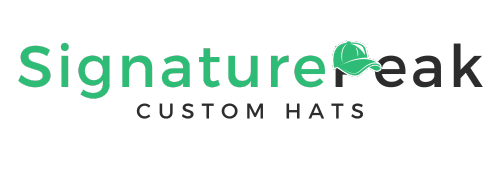

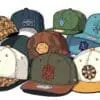

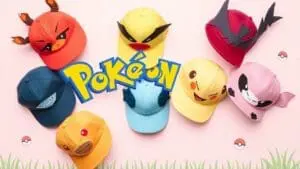
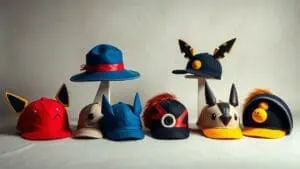

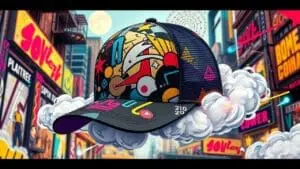

Leave a reply